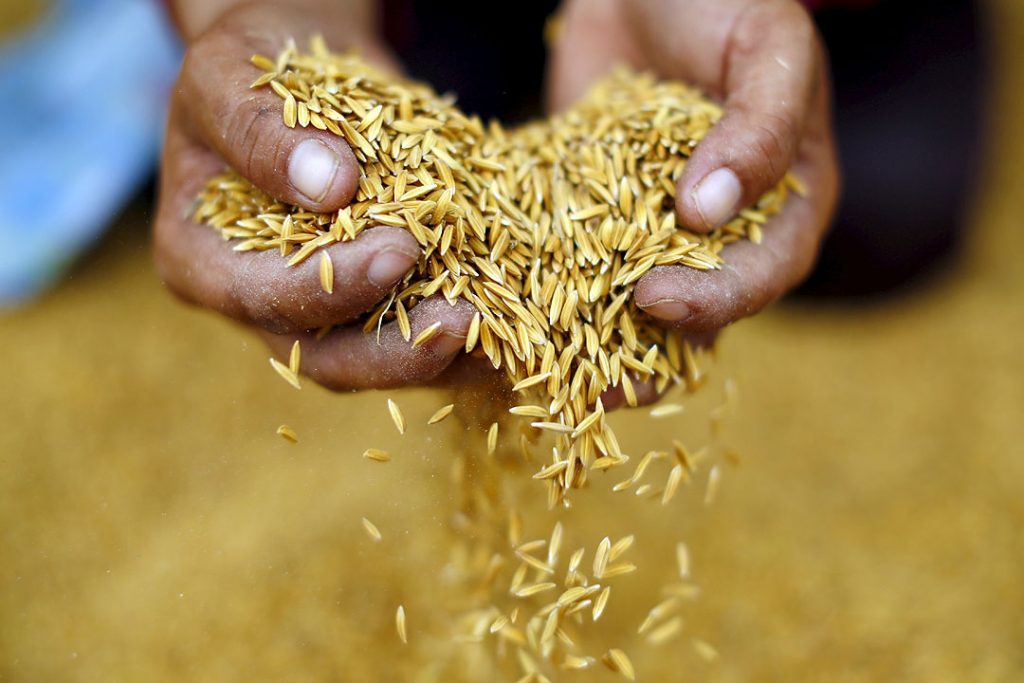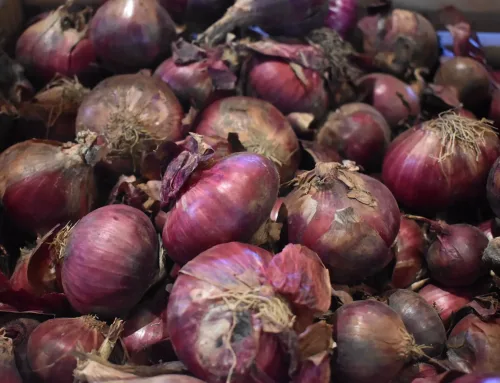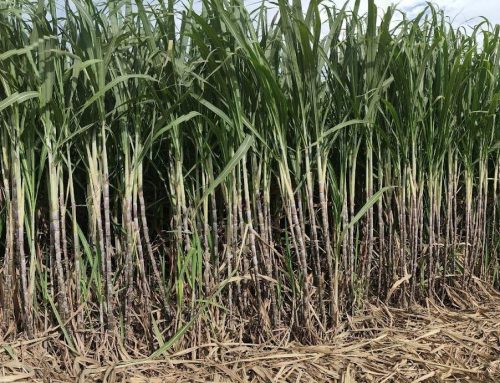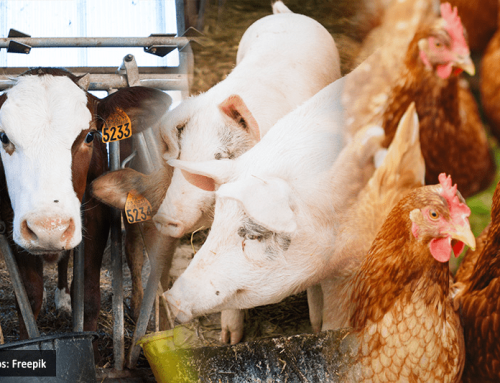In this Article
Explore 2024 trends in rice production and prices, the effects of reduced tariffs, updates on rice imports, and government initiatives to enhance production.

Decrease in Local Production of Rice
On August 28, 2024, the Department of Agriculture (DA) and the Philippine Rice Research Institute (PhilRice) raised concerns about stagnant rice production due to the effects of El Niño and La Niña. Agriculture Secretary Francisco P. Tiu Laurel, Jr. announced that the DA had revised its production estimate for the year from 20.44 million metric tons (MT) to 20.10 million MT, slightly above last year’s 20.06 million MT. In the first half (H1) of 2024, rice production dropped by 5.5%, falling from 9.05 million MT in H1 2023 to 8.53 million MT in H1 2024.
The government aims to match last year’s production levels, though much depends on the severity of typhoons in the second half of the year. PhilRice Deputy Executive Director Flordeliza Bordey emphasized that natural calamities could hinder production growth. The government distributes high-quality seeds to boost local production and temporarily reduces rice import tariffs from 35% to 15% until 2028 through Executive Order 62 (EO 62). Rice imports are expected to slow down through September due to the price increase of imported rice from Vietnam. As an alternative, rice-importing countries wait for India’s export ban to be lifted. Despite these initiatives, the outlook remains uncertain as weather conditions significantly influence the final production outcomes.
Rice Price Trends
- Farmgate Price
According to the latest data from the Philippine Statistics Authority (PSA) covering January to July of 2024, the average monthly farmgate price of palay surged by 31.98%, rising from Php 18.72 per kg in 2023 to Php 24.70 per kg in the same period of 2024. This increase is influenced by recent production challenges, including stagnant output due to El Niño and La Niña and ongoing uncertainties in the rice market. These factors contribute to the higher prices as production struggles to keep pace with demand and supply dynamics.
- Wholesale Price
The average monthly wholesale prices of rice types also showed significant increases in 2024. Regular-milled rice experienced the highest growth rate at 28.95%, rising from Php 36.48 per kg in 2023 to Php 47.04 per kg in 2024. Well-milled rice followed with a 27.17% increase, from Php 39.66 per kg in 2023 to Php 50.43 per kg in 2024. Meanwhile, premium rice increased by 24.72%, from Php 43.26 per kg to Php 53.95 per kg. Special rice had the smallest increase at 18.27%, rising from Php 46.63 per kg in 2023 to Php 55.14 per kg in 2024.
- Retail Price
The average monthly retail prices of rice types also showed significant increases in 2024. Regular-milled rice had the highest growth rate at 25.96%, rising from Php 40.31 per kg in 2023 to Php 50.78 per kg in 2024. Well-milled rice followed with a 25.60% increase, from Php 44.54 per kg in 2023 to Php 55.94 per kg in 2024. Meanwhile, Special rice grew 18.91%, rising from Php 54.20 per kg in 2023 to Php 64.45 per kg in 2024. These increases in retail prices are consistent with the rising farmgate and wholesale prices, reflecting cost pressures throughout the supply chain.
The escalation in farmgate prices, driven by stagnant production and increased costs, has been passed through wholesale levels to retailers. Additionally, the slowdown in rice imports due to high international prices and trade restrictions has compounded the situation, culminating in higher consumer prices than the previous year. For consumers, this means increased spending on rice, which could strain household budgets and reduce purchasing power. Furthermore, the higher prices may lead to reduced rice consumption, impacting overall dietary habits and food security. Table 1 below shows the summary of the average monthly rice prices of different rice types.
Table 1. Average Monthly Prices of Rice per Kilo by Type, January – July, 2023 – 2024
|
Items |
Average 2023 |
Average 2024 |
Growth Rate |
|
Farmgate Palay |
18.72 |
24.70 |
31.98% |
|
Wholesale Well-milled Rice |
39.66 |
50.43 |
27.17% |
|
Wholesale Regular-milled Rice |
36.48 |
47.04 |
28.95% |
|
Wholesale Special Rice |
46.63 |
55.14 |
18.27% |
|
Wholesale Premium Rice |
43.26 |
53.95 |
24.72% |
|
Retail Well-milled Rice |
44.54 |
55.94 |
25.60% |
|
Retail Regular-milled Rice |
40.31 |
50.78 |
25.96% |
|
Retail Special Rice |
54.20 |
64.45 |
18.91% |
Source: PSA, 2024
Note: Prices are in real values based on 2018 constant prices, as provided by PSA
Rice Imports Update
On August 30, 2024, the Bureau of Plant Industry reported that as of August 15, 2024, the Philippines has imported 2.65 million MT of rice, with Vietnam as the top supplier, contributing over 2.03 million MT. Thailand follows with 362,135 MT, while other notable sources include Pakistan (154,524 MT), Myanmar (66,910 MT), and India (21,676 MT). The United States Department of Agriculture (USDA) has revised its forecast for the country’s total rice imports to 4.6 million MT, slightly lower than the previous estimate of 4.7 million MT, due to decreased demand and slower purchases from Vietnam. Despite this reduction, the forecasted imports still exceed last year’s total of 3.61 million MT.
Nearly two months after EO 62, local rice remains cheaper than imported varieties. As of August 29, 2024, the Department of Agriculture’s (DA) price monitoring in Metro Manila shows that local regular milled rice is priced between Php 43 and Php 50 per kg, compared to Php 46 to Php 50 per kg for imported regular milled rice. Local well-milled rice costs between Php 47 and Php 55 per kg, while imported well-milled rice ranges from Php 48 to Php 55 per kg. Critics argue that the expected price drop in imported rice has not materialized despite the tariff cut. A detailed price comparison for other rice types is provided in Table 2.
Table 2. Retail Price Comparison of Local and Imported Rice as of August 29, 2024
|
Rice Type |
Local Price (Php/kg) |
Imported Price (Php/kg) |
|
Regular Milled Rice |
43 – 50 |
46 – 50 |
|
Well-Milled Rice |
47 – 55 |
48 – 55 |
|
Premium Rice |
50 – 58 |
54 – 60 |
|
Special Rice |
59 – 62 |
55 – 65 |
Source: DA Price Watch, 2024
Initiatives to Improve Rice Production
- DOST-PCAARRD’s Carrageenan PGP
To address stagnant rice production and enhance yields, the Philippine Council for Agriculture, Aquatic and Natural Resources Research and Development under the Department of Science and Technology (DOST-PCAARRD) funded the development of Carrageenan Plant Growth Promoter (PGP), an innovative technology derived from red edible seaweeds. Developed in collaboration with the Philippine Nuclear Research Institute (DOST-PNRI) and the National Crop Protection Center (UPLB-NCPC), Carrageenan PGP has been proven effective in boosting rice production. Farmers reported a 62.5% increase in yield and earlier harvesting by 20 days. The technology also shows promising results in crops such as corn, sugarcane, and mungbean.
The field verification confirmed that Carrageenan PGP enhances crop growth, with yields increasing by 15% to 30% and improved resistance to lodging and diseases. The technology, registered as an inorganic fertilizer by the Fertilizer and Pesticide Authority (FPA), has been adopted for commercialization by two private companies. Its environmentally friendly benefits and compatibility with existing farming practices make it a valuable tool for improving agricultural productivity and sustainability.
- DA’s Masagana Rice Industry Development Program
The DA is conducting a comprehensive review of its Masagana Rice Industry Development Program to boost rice production, meet self-sufficiency goals, and potentially enable rice exports. The program aims to enhance farmers’ incomes, lower consumer prices, and address stagnant national yield averages of about 84 sacks per hectare (Ha). The review focuses on improving rice seed quality, optimizing fertilizer use, and developing a more efficient logistics network for distributing harvests and inputs.
Agriculture Secretary Francisco P. Tiu Laurel, Jr. emphasized that the DA is recalibrating the program to boost productivity. Last year’s record harvest of 20.06 million MT from 4.82 million Ha highlights the potential to exceed 25 million MT annually with successful implementation. Secretary Tiu Laurel stressed the need for substantial government investments and a scientific approach to farming to overcome challenges and achieve increased productivity and sustainability in the sector.
References: Cariaso, B. (2024, August 29). DA: Local rice still cheaper than imports. Philippine Star. Retrieved August 29, 2024 from https://www.philstar.com/headlines/2024/08/29/2381325/da-local-rice-still-cheaper-imports
DA Press Office. (2024, August 6). DA aims for higher rice production under the MaSaGaNa Rice Industry Development Program. DA News Press Release. Retrieved September 3, 2024 from https://www.da.gov.ph/da-aims-for-higher-rice-production-under-the-masagana-rice-industry-development-program/
Halili, A.H. (2024, August 13). Palay production seen flat in 2024 due to El Niño. Business World. Retrieved August 28, 2024 from https://www.bworldonline.com/economy/2024/08/12/613606/palay-production-seen-flat-in-2024-due-to-el-nino/
Halili, A.H. (2024, August 28). Well-milled rice averages P56.22/kg in early Aug. Business World. Retrieved August 28, 2024 from https://www.bworldonline.com/economy/2024/08/27/616466/well-milled-rice-averages-p56-22-kg-in-early-aug/
Mendez, K.A.V.S. (2023, September 5). DOST-PNRI and UPLB-NCPC-Developed Plant Growth Promoter Guarantees Improved RIce Production for Farmers. DOST-PCAARRD Portal. Retrieved September 3, 2024 from https://www.pcaarrd.dost.gov.ph/index.php/quick-information-dispatch-qid-articles/dost-pnri-and-uplb-ncpc-developed-plant-growth-promoter-guarantees-improved-rice-production-for-farmers?highlight=WyJyaWNlIl0=
Panganiban, J.N. (2018, March 14). Field Testing of Carrageenan PGP in Major Rice and Corn Producing Regions Officially Launched. DOST-PCAARRD Portal. Retrieved September 3, 2024 from https://www.pcaarrd.dost.gov.ph/index.php/quick-information-dispatch-qid-articles/field-testing-of-carrageenan-pgp-in-major-rice-and-corn-producing-regions-officially-launched
Pelonia, A. (2024, August 16). PHL unmilled rice output seen flat this year. Business Mirror. Retrieved September 3, 2024 from https://businessmirror.com.ph/2024/08/26/phl-unmilled-rice-output-seen-flat-this-year/
Pelonia, A. (2024, August 28).Rice imports arrivals as of mid-Aug hit 2.65 MMT–BPI. Business Mirror. Retrieved August 28, 2024 from https://businessmirror.com.ph/2024/08/28/rice-imports-arrivals-as-of-mid-aug-hit-2-65-mmt-bpi/
Pelonia, A. (2024, August 16).Local traders bought palay at higher price in July–PSA. Business Mirror. Retrieved August 28, 2024 from https://businessmirror.com.ph/2024/08/16/local-traders-bought-palay-at-higher-price-in-july-psa/
PSA. (2024, August 28). Cereals: Wholesale Selling Prices of Agricultural Commodities. PSA OpenSTAT. Retrieved September 3, 2024 from https://openstat.psa.gov.ph/PXWeb/pxweb/en/DB/DB__2M__NWS/0052M4AWA01.px/?rxid=485c714d-3afc-4c27-8e2b-159cc9280ace
PSA. (2024, August 28). Cereals: Retail Prices of Agricultural Commodities by Geolocation, Commodity, Year and Period. PSA OpenSTAT. Retrieved September 3, 2024 from https://openstat.psa.gov.ph/PXWeb/pxweb/en/DB/DB__2M__2018/0042M4ARA01.px/?rxid=a6ebf53e-9465-4a9f-b11f-903d6ebc2cd4
PSA. (2024, August 28). Cereals: Farmgate Prices by Geolocation, Commodity, Year and Period. PSA OpenSTAT. Retrieved September 3, 2024 from https://openstat.psa.gov.ph/PXWeb/pxweb/en/DB/DB__2M__NFG/0032M4AFN01.px/?rxid=a070cf07-5932-4692-8727-9fa79db28cc4








